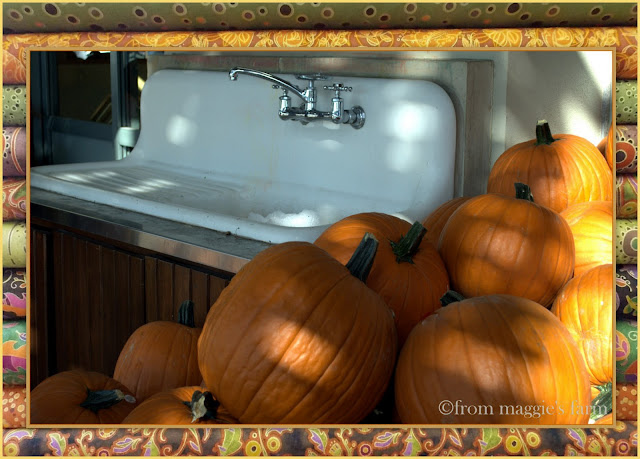Vegetables
artichokes + arugula + asian vegetables + beans, green + beans, shelling + beets + bok choy + broccoli + broccoli rabe + brussels sprouts + burdock + cabbage + cactus pads (nopalitas) + carrots + cauliflower + celeriac + celery + chard + chicory + collard greens + corn + cress + cucumbers + eggplant + endive + fennel + garlic + gingerroot + herbs + horseradish + jicama + kale + lambsquarters + leeks + lettuce + mushrooms + mustard greens + nettles + okra + olives + onions + parsnips + peas + peppers, chile + pepper, sweet + potatoes + purslane + radish + rutabagas + salsify + scallions + shallots + spinach + sprouts + squash, summer + squash, winter + sunchokes + sweet potatoes + tomatillos + tomatoes + turnips
Fruit and Nuts
almonds + apples + chestnuts + cranberries + pears + pomegranate
Meat
Seafood
Find favorite fall eats, including Farmers Market Favorites, at the links, below:
Pumpkin Pork Belly Mixed Bean Cassoulet
Supper Salads: Dressed for Success
Okra Fritters with Sweet Pepper Tomato Saute
Apple Pumpkin Bread Pudding with Pecan Streusel
Peanut Pumpkin Bisque
And a couple of great links, with maps, charts, and interactive resources, to keep yourself, and those you love, eating well:
Pumpkin Pork Belly Mixed Bean Cassoulet
Supper Salads: Dressed for Success
Okra Fritters with Sweet Pepper Tomato Saute
Apple Pumpkin Bread Pudding with Pecan Streusel
Peanut Pumpkin Bisque
And a couple of great links, with maps, charts, and interactive resources, to keep yourself, and those you love, eating well:
Do you need a little inspiration to continue to eat seasonally at home? If you find yourself in Austin this weekend, or any weekend for that matter, check out the Texas Farmers' Markets calendar of events. The Season's Best series, with Market Chef Maggie Perkins (MOI!) runs twice a month at TFM Lakeline and TFM Mueller. This week, I'll be creating eats from the best the market, and the season, has to offer. Additional appearance dates for the year include November 7 and 21, December 5 and 19 at TFM Lakeline, and November 8 and 22, December 6 and 20 at TFM Mueller.
And as the evenings cool, and those first cold snaps arrive, be prepared to face the seasons ahead with your best GUMBO GAME.
I'm delighted to be joining Kitchen Underground and Hops & Grain Brewery in Austin for Beer and Gumbo, a tour through the brewery and a gumbo-making class, culminating in a dinner of Chicken and Andouille Gumbo, and Bread Pudding with Hard Sauce (which takes a beer brewery twist!). Seating is limited and on a first-come basis so hop on that, y'all!
Class will take place Monday, November 2, and tickets can be purchased right here. C'est si bon, cher!
Last but not least, I am honored to have my recipes featured in local Georgetown View this month. Hard copies are available at newsstands around Georgetown, like the Visitor's Center and the Chamber of Commerce, however if you are not local, you can also see a version of the article online. I'll also share more about this neat experience in an upcoming blogpost. I'm happy to say I'll be featured in December with ideas for easy, yet elegant holiday entertaining, and again early next year, for Mardi Gras favorites. I'll keep you posted!

























